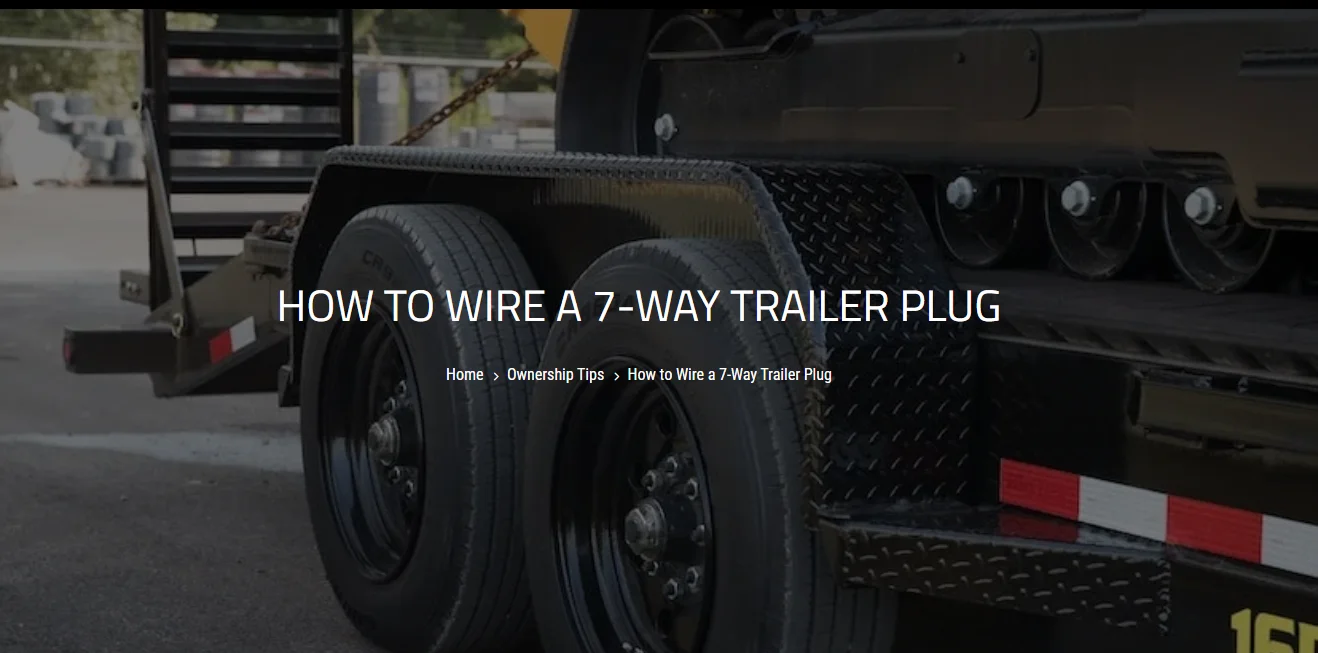Channel your inner Vogue and Confidence!

Understanding the complexities of trailer wiring can be intimidating for many RV owners particularly those who are just starting out. The 7-way RV plug is one of the most important parts for guaranteeing a secure and reliable connection between your tow vehicle and trailer. This connector is essential for supplying power to key systems like brake lights, turn signals, electric trailer brakes and even auxiliary battery charging. Whether you’re preparing for your first RV trip or upgrading your trailer’s electrical setup, knowing how a 7-way plug works is critical. This beginner’s guide will walk you through everything you need to know, including the functions of each pin, common setups, and troubleshooting tips. If you’ve been searching for information on 7 way plug wiring, you’re in the right place.
A 7-way RV plug is a standardized trailer connector that provides a reliable electrical link between a towing vehicle and a trailer or camper. It contains seven pins, each responsible for powering a specific function, such as lighting or braking. This plug type is commonly found on RVs, large trailers, and fifth wheels because it supports more functions than smaller 4-pin or 5-pin connectors.
This configuration ensures that trailers have all the necessary safety and utility connections, including brake lights, turn signals, reverse lights, and electric brakes. Without a functioning 7-way plug, your RV trip can be compromised, both legally and functionally.
RVs require more than just basic lighting. A simple 4-way connector might suffice for a small utility trailer, but RVs need additional power feeds for brakes, charging systems, and auxiliary lighting. The 7-way plug provides all of this in a single, durable connector. It makes towing safer by ensuring your trailer’s lights and braking system work in sync with your tow vehicle.
Because of the plug’s adaptability, you can also use auxiliary power that comes straight from the car to operate interior trailer functions like lights or refrigerators. This helps keep batteries charged when traveling which is especially helpful while boondocking or dry camping.
Understanding what each pin does is the foundation of working with a 7-way plug. Here’s a breakdown of the typical configuration, starting from the top and going clockwise:
Supplies power to charge the trailer battery or operate interior lights and accessories.
Controls the trailer’s electric braking system. This pin is connected to the brake controller in your vehicle.
Powers the trailer’s right turn signal and brake light.
Activates the trailer’s reverse lights when your tow vehicle is in reverse.
Connects the electrical system of the trailer to the vehicle’s chassis ground.
Operates the trailer’s left turn signal and brake light.
Powers the trailer’s running lights, including clearance and marker lights.
While this is the most common configuration (used by RVIA standards), always check your vehicle and trailer documentation to verify the wiring layout.
Wiring a 7-way plug often involves color coded wires. However, it’s very important to note that colors can vary by manufacturer. Here’s a general guide to the most common color-coding
Again, never assume wiring color alone—use a multimeter or test light to confirm connections before finalizing your setup.
If you’re wiring a new plug or repairing an existing one, having the right tools on hand will make the job easier and safer. Here are some essentials:
Many plug kits include pre-labeled cables and instructions which makes installation easier for novices.
Installation involves connecting each wire from the trailer’s harness to the corresponding terminal in the plug. Here’s a simplified step by step guide
Even a well-installed 7-way plug can experience issues over time. Here are some of the most common problems and how to fix them:
If your tow vehicle or trailer doesn’t have a 7-way connector, adapters are available to bridge the gap. Common adapter types include:
Adapters are helpful in emergencies but aren’t always a long-term solution. For regular towing, it’s best to install a proper 7-way system on both ends.
Keeping your 7-way plug system in good condition extends its life and ensures safe towing:
Regular maintenance takes just a few minutes and can prevent serious problems down the road.
While many DIYers can install or repair a 7-way plug with basic tools, there are times when it’s best to involve a professional:
Auto electricians or RV service centers have the equipment and expertise to ensure everything is wired safely and to code.
Knowing how your 7-way plug works isn’t just about convenience—it’s about safety. A poorly wired or malfunctioning plug can lead to trailer brake failure, non-functioning lights, or even accidents. Understanding this system helps you troubleshoot on the go, make informed decisions and communicate better with service technicians.
Additionally, learning your RV’s wiring opens the door to future upgrades such as solar charging, rear cameras or towing additional accessories.
Understanding the 7-way RV plug is a very important step for any new trailer owner. This connector serves as the lifeline between your RV and tow vehicle, powering essential systems like brakes, lights and battery charging. By learning the functions of each pin, exploring the basics of 7 way plug wiring, and practicing good maintenance, you’ll be better equipped to handle your rig with confidence. Whether you’re installing a new plug, troubleshooting an issue or just trying to get familiar with your equipment, this guide offers a strong foundation for safe and successful towing. With a bit of knowledge and the right tools, you’ll be ready for any journey the open road throws your way.